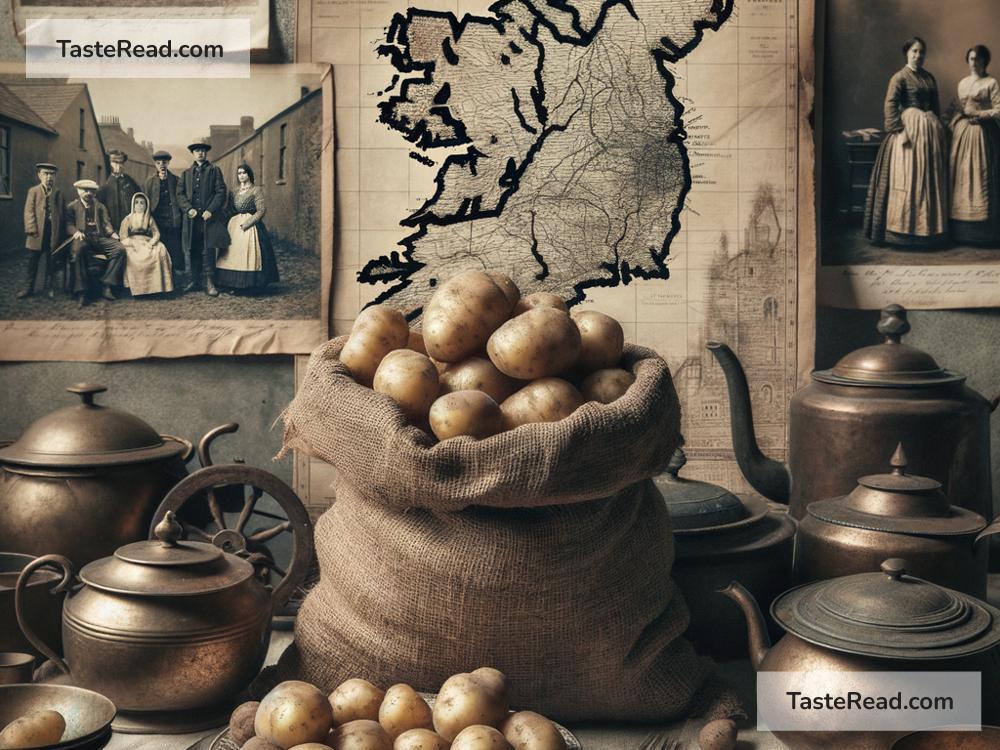The Fascinating Story of the Potato’s Role in the Irish Famine
The Irish Famine, also known as the Great Hunger, is one of the most tragic events in Ireland’s history. It happened between 1845 and 1852 and caused enormous suffering, death, and migration. While many factors contributed to this disaster, one crop played a central role: the humble potato. This blog explores the fascinating and heartbreaking story of the potato’s role in the Irish Famine.
The Arrival of the Potato in Ireland
The potato first arrived in Europe in the late 1500s after being brought from South America by explorers. By the 1600s, it had reached Ireland, and the Irish quickly embraced the crop. Potatoes were easy to grow, even in poor soil, and provided a reliable source of food for the population.
By the 18th century, potatoes became the staple food for most Irish people, especially the poor. Many families depended almost entirely on potatoes for their meals. A single acre of land could produce enough potatoes to feed a family for an entire year. This made the crop incredibly important for survival, especially in rural areas.
However, relying so heavily on one type of food was risky. If something went wrong with the potato harvest, the consequences would be devastating.
A Growing Population and Dependence on Potatoes
As Ireland’s population grew in the early 19th century, the dependence on potatoes became even greater. Many families lived in small cottages and had limited land to grow crops. Potatoes were ideal because they produced high yields and were nutritious. They provided calories, vitamins, and minerals, making them a complete food for many Irish people.
Unfortunately, this dependence meant that Ireland was vulnerable. If potatoes failed as a crop, millions of people would be left with nothing to eat.
The Blight Strikes
In 1845, a disaster struck Ireland: a disease called “potato blight” arrived. This disease, caused by a microorganism called Phytophthora infestans, attacks the leaves and tubers of potato plants, leaving them rotten and inedible. The blight wiped out vast amounts of Ireland’s potato crop that year.
The following years were even worse. The blight returned in 1846, destroying nearly all of the potato harvest. Without their main food source, millions of Irish people faced starvation. The famine hit hardest in rural areas, where families depended entirely on potatoes.
Suffering During the Famine
The Irish Famine was more than just a food crisis; it caused immense suffering across the country. Families tried to survive on alternative foods like turnips, wild greens, and shellfish, but these weren’t enough to replace the potatoes. Many became weak and sick from hunger. Diseases like typhus, dysentery, and cholera spread quickly among the starving population.
Thousands of people were evicted from their homes because they couldn’t afford rent. Landowners often turned people out of their cottages, leaving them without shelter. Homeless families wandered the countryside, desperately seeking food and help.
By the end of the famine, around a million people had died from starvation and disease. Another million left Ireland, fleeing to countries like the United States, Canada, and Australia. This mass migration changed Irish society forever.
Was the Potato Famine Preventable?
Historians debate whether the famine could have been avoided or at least made less severe. One key factor was Ireland’s reliance on the potato crop. When the blight struck, there were no backup food systems in place for the poor majority of the population.
But the famine wasn’t caused by crop failure alone. British policies and attitudes at the time worsened the situation. Ireland was under British rule, and much of the country’s food (like grains, meat, and dairy) was exported to England, even during the famine. The British government provided some aid, but it wasn’t nearly enough to match the scale of the crisis. Many argue that neglect and discrimination toward the Irish contributed to the high death toll.
The Aftermath of the Famine
The Irish Famine left a deep scar on Ireland. By 1852, the country’s population had dropped by around 20%. Families were torn apart, communities were destroyed, and the Irish economy suffered greatly. The mass emigration caused by the famine also permanently changed Ireland. Many Irish people settled abroad, and their descendants created vibrant Irish communities in places like Boston, New York, and Sydney.
Even today, the famine is remembered as a time of great suffering and loss. It also serves as a lesson about the dangers of over-reliance on a single crop and the need for fair and effective government policies during crises.
The Legacy of the Potato
It’s fascinating and tragic to think about how much influence the potato had on Ireland’s history. What started as a simple, life-saving crop eventually became the center of a devastating famine. The Great Hunger transformed Ireland forever and reshaped its population, culture, and society.
Today, the Irish Famine is remembered not only as a historical event but also as a reminder of the resilience of the Irish people. Despite unimaginable hardships, they survived, rebuilt, and carried their story forward.
The humble potato, once a symbol of sustenance, remains an important part of Irish cuisine—and its history. But its role in the famine will always remind us of the fragile balance between humans, food, and the environment.


